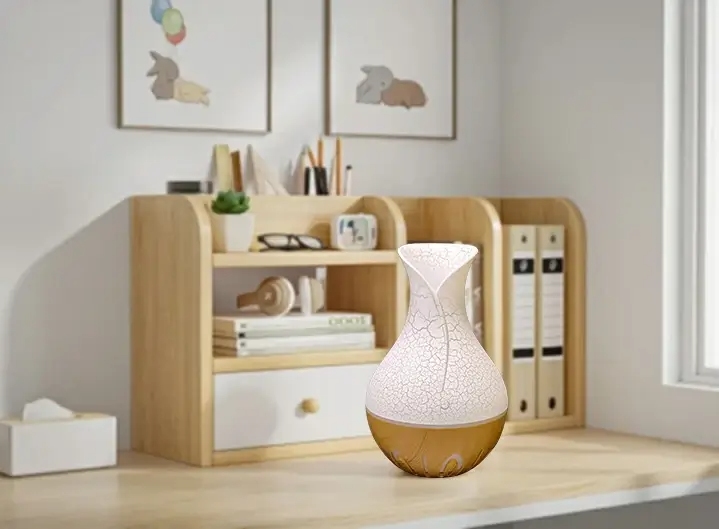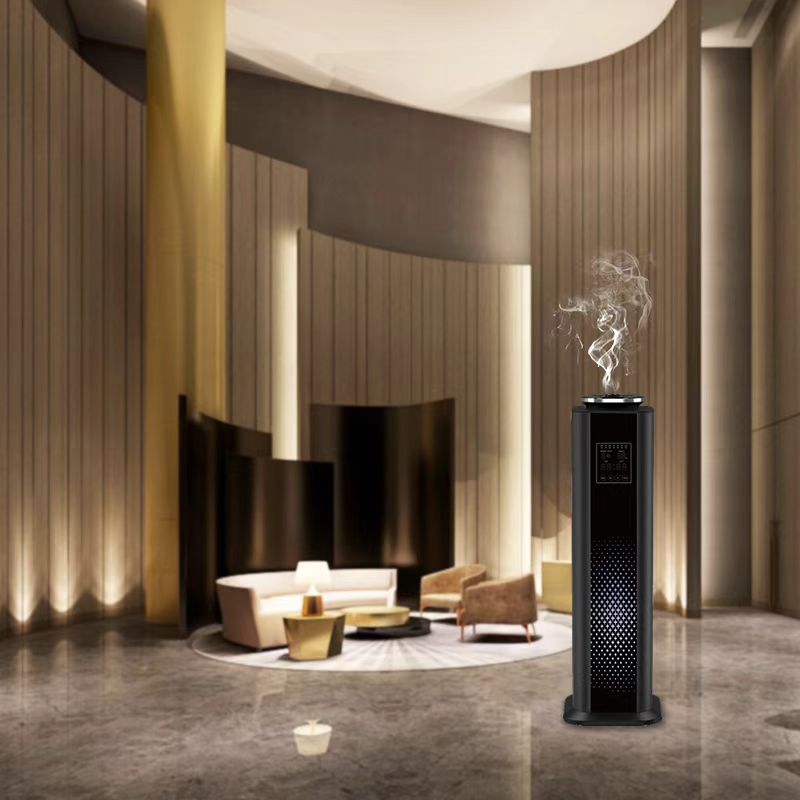
Ever walked into a room that just feels right? The air’s got this subtle lift, maybe a hint of lavender or eucalyptus that eases the day’s edge without overwhelming you. That’s the magic of smart home tools like aroma diffusers. But then there’s the humidifier, that quiet hero cranking up moisture in dry winter air to keep your skin from cracking and your sinuses from staging a revolt. If you’re staring down a stack of gadgets online, wondering which one—or both—deserves space on your shelf, you’re not alone. Plenty of folks mix them up, thinking they’re interchangeable. Spoiler: they’re not. In this piece, we’ll break it down clean and simple, drawing from real-world setups in homes and offices. By the end, you’ll know exactly what’s what, and yeah, maybe even spot the one that’s been missing from your routine.
Picture this: it’s a rainy Tuesday afternoon, and you’re grinding through emails in a home office that smells like… well, stale coffee and yesterday’s takeout. An aroma diffuser steps in like a breath of fresh air—literally. These devices disperse essential oils into the room using methods like ultrasonic vibration or nebulizing tech, turning tiny oil droplets into a fine mist that hangs in the air. No heat involved, which means the oils keep their punchy compounds intact, delivering benefits like stress relief or a mood boost.
Take the Touch Control Fragrance Spray model from Ideal Tech’s lineup. It’s got this sleek lighthouse vibe, aluminum alloy build that looks sharp on a desk, and a 100ml capacity that covers up to 300 cubic meters. You tap the bottom for instant on, or pair it with a Bluetooth app to tweak timing and light effects—four breathing modes that shift from chill blue to warm amber. Folks in yoga studios swear by it for that even 360-degree spread; no dead zones where the scent fizzles out. And get this: with a 10,000mAh battery, it runs for hours without hogging an outlet, perfect for those pop-up work calls where you need calm without the cord tangle.
But it’s not just about the smell. Studies from places like the National Institutes of Health back up how certain oils, like peppermint, can dial down headaches or sharpen focus. In one trial with office workers, diffusion cut reported tension by 20% over a month. That’s not fluff—it’s why aroma diffusers have carved out a spot in everything from bedrooms to boardrooms.
Now flip the script to a bone-dry February in the Midwest. Your throat’s scratchy, plants are drooping, and static shocks zap you every time you touch a doorknob. Enter the humidifier: a machine that pulls water from a tank and pumps it out as vapor or mist, bumping up indoor humidity to that sweet 40-60% range experts recommend. There are cool-mist ultrasonic ones for nurseries (safer, no burn risk) and warm-mist evaporative models that feel like a spa on a budget.
Humidifiers shine in arid spots or during heating season. The American Academy of Pediatrics notes they can ease cold symptoms by loosening mucus—think fewer midnight cough fests for the kids. Capacity matters here; a basic tabletop unit might handle 200 square feet, but for open-plan living rooms, you want something with a gallon tank and auto-shutoff to avoid that swampy overkill. Maintenance is key, though—skip the weekly vinegar scrub, and you’re inviting mold parties. I’ve heard from a friend in Colorado who skipped it once; her unit turned into a bacteria breeding ground, and the whole house reeked for days. Lesson learned: clean ’em like you mean it.
Data-wise, the EPA pegs optimal humidity at preventing issues like dry skin or even wood floor warping. In a survey by the Asthma and Allergy Foundation, 65% of users reported better sleep after adding one to the bedroom. Solid, right? But here’s the rub—they don’t scent the air. That’s where things get interesting when you stack ’em against diffusers.
Alright, let’s get granular. Both gadgets mist stuff into the air, but one’s about hydration, the other’s about aroma therapy. To make it stick, here’s a quick comparison table based on common models and user feedback from home setups.
| Feature | Aroma Diffuser | Humidifier |
| Primary Function | Disperses essential oils for scent and therapeutic benefits | Adds moisture to combat dry air |
| Water Use | Minimal or none (nebulizing types) | Heavy—tanks from 200ml to 5L |
| Coverage Area | 20-3000m³ | 10-108 sq ft, varies by output |
| Energy Draw | Low (5-12W, like the Water-Drop model’s 5W) | Moderate (5-25W, more for warm mist) |
| Maintenance | Wipe oils, occasional deep clean | Daily refills, weekly descaling |
| Health Perks | Aromatherapy (e.g., lavender for sleep) | Hydration relief (e.g., sinus ease) |
| Best For | Mood enhancement, scent layering | Dry climates, allergy seasons |
See the overlap? Some diffusers can humidify lightly if they’re ultrasonic, but it’s not their jam. Humidifiers might let you add oils unofficially, but that risks gunking up the works or uneven diffusion. In a real test I recall from a home goods forum, a user swapped oils into a cheap humidifier—scent was there, but the mist clumped, leaving oily residue on furniture. Not ideal.
So, when do you grab the diffuser over the humidifier? Think scenarios where vibe trumps vapor. Mornings in a cluttered kitchen? Fire up something citrusy to cut through the fog—eucalyptus for that wake-up zing. Ideal Tech’s Large Area Smart model, with its 500ml tank and WiFi app, blankets a whole hotel lobby or open-office floor in even fragrance, no hot spots. Users in spas report it holding steady for eight-hour shifts, blending scents like sandalwood for that grounded feel.
Or consider bedtime rituals. A bedside unit like the Water-Drop, with its seven-color lights and wood-glass curve, dims to a soft glow while chamomile wafts out. One mom I know uses it in her kid’s room—not overpowering, just enough to soothe post-storytime jitters. Industry stats show aromatherapy markets growing 8% yearly, per Grand View Research, as folks chase that holistic edge. If your space already hums at comfy humidity, a diffuser’s your upgrade for sensory depth.
But hey, it’s not all zen. Oils can irritate pets or asthmatics if overdone—start low, maybe 30 minutes on a timer. And in humid tropics? Skip it; you don’t need extra moisture masking the scent.
Flip it: your nose feels like sandpaper, and houseplants are yellowing faster than a bad bet. Humidifier time. In bone-dry apartments—say, a high-rise in Phoenix— these bad boys restore balance. A whole-house unit might cost more upfront, but portables like console models handle 500 square feet easy, with hygrostats that dial in 45% humidity automatically.
Take allergy season. The CDC links low humidity to worse pollen fallout; bump it up, and symptoms drop. A study in the Journal of Hospital Infection found humidified rooms cut airborne viruses by 30%—handy for shared homes. Picture a family in New England, furnace blasting: evenings with a warm-mist unit steaming eucalyptus (added separately, mind you) turn coughs into yawns.
Downsides? Noise from fans can buzz like a distant chainsaw, and mineral dust from tap water means distilled or filters are your friends. One guy in my circle forgot to empty his after vacation—came back to a funky smell that took days to air out. Moral: they’re workhorses, but treat ’em right.
Why choose when you can combine? In a sweet spot like a living room, run a humidifier base layer for moisture, then layer a diffuser for scent. Ideal Tech’s floor-standing M8000 pairs well—its Bluetooth tweaks won’t clash with a smart humidifier’s schedule. Results? Balanced air that hydrates and heals, like in yoga spaces where pros mist both for that full immersion.
Just watch interactions: oil residues might build in humidifier tanks, so keep ’em separate. A quick wipe-down routine fixes that. From hotel lobbies to cozy dens, this duo’s a winner for year-round comfort.

If you’re leaning toward an aroma diffuser after all this, let’s talk suppliers. Ideal Tech Co., Ltd., out of Guangdong, China, has been dialing in these gadgets for years, blending factory precision with real-user smarts. They’re all about end-to-end—design to delivery—with certifications like CE and RoHS keeping things legit. Their lineup, from the compact Water-Drop for nooks to the beast-mode M8000 for big rooms, uses stuff like aluminum and beech wood for that durable, good-looking edge. Clients from the US to Australia tap them for OEM runs, and it’s easy to see why: reliable coverage, app controls that actually work, and scents that linger without the fade. Whether you’re outfitting a home office or a boutique hotel, they’ve got the build quality that sticks around.
Diving into aroma diffuser vs. humidifier territory shows they’re teammates, not twins—each tackling air quality from a different angle. If dryness is your dragon, humidify first. Craving that sensory spark? Diffuser all the way. Or mix ’em for the full package. Either path, you’re leveling up your space, one mist at a time. Grab what fits your flow, and watch how a little air tweak ripples out—better sleep, sharper focus, fewer headaches. What’s your next move?
The big split? Aroma diffusers focus on spreading essential oils for scent and wellness perks, like easing stress with lavender, while humidifiers pump moisture to fight dry air and stuffy sinuses. Both mist, but one scents, the other hydrates—pick based on what your room’s begging for.
Kinda, but not really. Ultrasonic diffusers add a touch of moisture with the mist, covering small dry spells in a bedroom. For serious humidity battles, though—like winter furnace woes—a dedicated humidifier’s got the tank size and power to really shift the levels.
Hands down, start with a humidifier to knock out that parched feel and keep things from cracking. Once humidity’s steady, layer in an aroma diffuser for the fun part: custom scents that make your space feel alive, not just livable.
If focus and calm are your goals amid the Zoom grind, go aroma diffuser—think peppermint for that mental kick. But if dry air’s fogging your screen time, humidifier first to clear the cobwebs. Many swear by both for all-day wins.
Absolutely. Models built for it, like floor-standing ones with 3000m³ reach, blanket open spaces evenly via app controls. Great for homes or hotels where you want scent without chasing cords room to room.